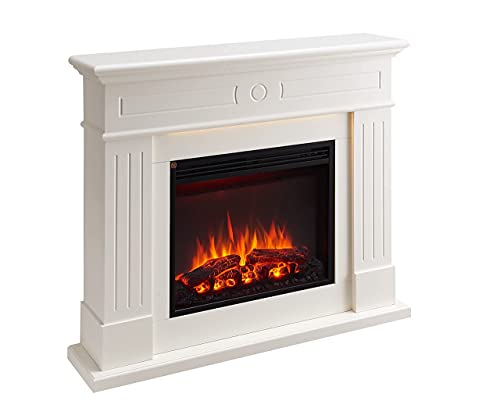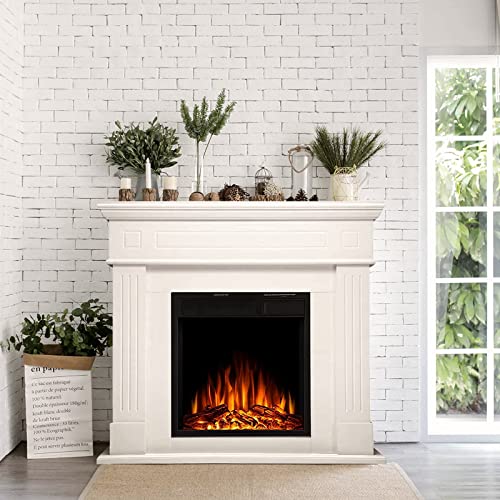The Benefits of an Ethanol Fireplace
 Ethanol fireplaces are a fantastic alternative to wood or gas fires, as they don’t require chimneys or flues. They also don’t generate any smoke or ash and are easily moved between homes.
Ethanol fireplaces are a fantastic alternative to wood or gas fires, as they don’t require chimneys or flues. They also don’t generate any smoke or ash and are easily moved between homes.
 Use bio-ethanol only on the burners designed to burn the fuel. The warranty on your burner could be void in the event that you make use of other liquid fuels or Bio-ethanol fireplaces gels.
Use bio-ethanol only on the burners designed to burn the fuel. The warranty on your burner could be void in the event that you make use of other liquid fuels or Bio-ethanol fireplaces gels.
Cost
The cost of a bioethanol fireplace is in accordance with the kind and design you choose. There are models ranging that range from a few hundred dollars to a few thousand dollars however, they are generally cheaper than a gas or wood fireplace. Certain models are freestanding fireplace, while others can be attached to a fireplace or built into the wall. Ethanol fires are also more eco friendly than their wood-burning counterparts.
Bioethanol fireplaces are popular because they create a stunning flame that is free of soot and smoke. They can be used nearly everywhere and are simple to maintain. However it is recommended to use bioethanol fuel that is specifically made for use with these fireplaces. Other types may cause damage to the burner and increase the danger of fire. Also, it is not recommended to keep flammable items near the bioethanol fire.
They are great for heating rooms but shouldn’t be your primary source of warmth. They are more efficient than wood-burning fire places and produce lots of heat, around 2kW on average. This will not be enough to warm an entire home, but it could definitely warm up the smaller space.
It is also necessary to consider the cost of maintaining an ethanol fireplace. The fireplace must be stored in a safe place, out of the reach of pets and children. Follow the manufacturer’s instructions when adding fuel, then extinguishing the flame and allowing the heater to cool.
A ethanol fireplace can be a great alternative to a wood-burning stove. The main advantage of this fire is that it doesn’t require a chimney, meaning you will save on installation and maintenance costs. It is also safer as opposed to other types of fireplaces. It is still a good idea to speak to an expert before making a decision. This means you can be sure that the fireplace will be put in place safely and correctly.
Environmental impact
An ethanol fireplace can be an eco-friendly alternative to traditional wood-burning fires. It uses bioethanol fuel which is created by fermenting the sugar and starch components from materials from plants such as corn, straw, and maize. The biofuel’s liquid undergoes further distillation to let it efficiently and cleanly burn. This kind of fuel is a renewable source of energy and doesn’t emit harmful smells or emissions. Additionally, it is free of smoke and soot and is therefore a safer option for your home over other types of fires.
Ethanol fireplaces aren’t required to have chimneys and venting systems, so they can be put in almost any room in your house. They are simple to use, and most models have some form of a remote control. Many of them also feature a built-in cooling system that prevents the fuel from overheating. They can be used as a main heating source or an additional heating unit. They are also ideal for people who live in apartments or in condos.
Bio ethanol fireplaces emit very low levels of smells. They are therefore a great choice for homes where people suffer from allergies or asthma. This kind of fireplace is safe to use in a nursery or a child’s room. Fireplaces of this kind must be kept away from flammable items such as furniture or curtains.
The ease of use of an ethanol fire is one of its greatest advantages. It is much easier to set up than a fireplace that burns wood and does not require complicated wiring or installation. The fuel that is liquid can be stored in a container that is portable to allow it to be easily moved from one area to another. This allows you to take pleasure in the warmth of a fireplace without having to deal with the mess of stacking, chopping and cleaning up wood.
Another benefit of a bio ethanol fireplace is that it produces very little pollution, making it an excellent alternative for those who are concerned about the environment. They also aid in saving money and energy.
Safety
A bioethanol fireplace is a safer alternative to an open flame. They are simple to operate, produce less smoke and burn more efficiently than other alternatives. However, just like all fireplaces and other appliances that produce fire they can be dangerous if used incorrectly. Fireplaces that are constructed with wood require special care and attention, so it is important to read the directions carefully and follow them closely.
When using a bio-ethanol fireplace, make sure that it’s in a well-ventilated room and at a distance from other materials that are combustible. Keep pets and children away from the fireplace. Don’t try to move it while it’s burning, as this could result in an accident.
Bioethanol fireplaces might not be as dangerous as gas or wood fireplaces. However there are some guidelines for safety to ensure they are safe. This includes keeping all flammable objects at least 1500mm from the flame and not touching it while the fire is burning. It is also essential to not add fuel to a fire that’s not approved.
The process of burning bio-ethanol fireplaces (Our Home Page) fire places is secure, particularly when you follow the guidelines. Basically, the fuel is pumped into a vapour accelerator which is then vaporized and ignited by a filament. This method of combustion makes sure that the fuel is completely burned, removing unpleasant odours as well as harmful substances such as dioxins or furans.
Ethanol fireplaces are dangerous when they are not used correctly It is therefore essential to follow the instructions of the manufacturer when installing and operating them. They must also be kept clear from combustible material like newspapers and curtains. They should be kept a away from other household appliances and should not be used near sleeping animals or children.
A bioethanol fireplace has the primary benefit that it doesn’t emit any harmful odours or fumes. This makes it a safer option for homes with pets or children. They are also easier to utilize than traditional fireplaces since they do not require a chimney, and they don’t cause carbon monoxide poisoning. These fireplaces offer a variety of advantages, including the ability to install them wherever you want and move them around.
Installation
A bioethanol fireplace can add warmth and ambiance to any room. They come in many styles and can be installed in various ways. They can be wall mounted electric fireplaces-mounted, built-in, freestanding or see-through. It is recommended to go through the installation guide for a fireplace prior installing it. This will ensure that you won’t have any issues with the installation and that your fireplace is safe to use.
Installing a bioethanol fire is a fairly straightforward process. It is as simple as building an enclosure in the wall to accommodate the fireplace and putting the burner inside it. The frame should be made of a non-flammable material. This will prevent the burner from burning the wall. This also helps prevent the flame spreading to other parts in the room. The frame should be fixed to the wall with suitable screws and dowels.
As opposed to other kinds of fireplaces ethanol fires do not require a chimney nor a flue. This makes them a affordable choice for homeowners. In addition, they can be used in any room of the house and are easily moved from one location to another. They do not release any harmful gasses.
If used properly When used correctly, bioethanol fireplaces are safe. However, just like all fires, they should be kept away from flammable surfaces and children. Additionally the fuel must be kept in a secure location and the fire extinguished before fueling it again.
Ethanol fireplaces do not produce soot or ash, and they are easy to clean. These fireplaces are an excellent choice for those worried about the impact on the environment that traditional wood-burning fireplaces. Ethanol-fueled fireplaces are a great alternative to gas or electric fireplaces.
While bioethanol fireplaces are an excellent addition to any home however, they shouldn’t be used as the primary source of heat. They are designed to provide warmth and create a cozy environment, but are not powerful enough for heating an entire home. The best method of installing a bioethanol fireplace is to hire an expert to complete the job.
